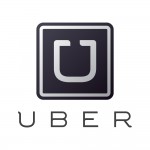The Real Verizon-AOL Rationale.
BAM! (And I’m not talking Brooklyn Academy of Music.) Verizon has agreed to buy AOL for $4.4B and AOL’s stock price has jumped like a marlin. Here’s the quote announcing the deal from Verizon’s CEO:
“AOL has once again become a digital trailblazer, and we are excited at the prospect of charting a new course together in the digitally connected world,” Verizon CEO Lowell McAdam said in the statement.
A digital trailblazer? I haven’t seen a lot of trailblazing going on in 15 years. The purchase of TechCrunch was blaze-y enough, I guess, but that brand has laid fallow since Michael Arrington was moved aside. The story in Ad Age suggests a big part of the purchase rationale is AOL’s content, yet the real story is in the ad platform. Specifically, AOL’s ability to track users from desktop to mobile device. And now Verizon offers AOL the ability to collect data from mobile devices like few others. Also Verizon knows where you go on your desktop…and soon may integrate your TV.
The key to being able to do something smart with all of this data is having a single user identifier. A social security number, if you will, for each person on the web. My wife pays the Verizon bill and when I use my mobile to make business calls, her name comes up – so they have a long way to go.
Make no mistake, this deal isn’t about the content, that’s secondary. It’s about advertising and data and analytics. Good work Verizon, this is a nice start. But don’t turn to AOL for you vision. Nuh uh!
Peace.


